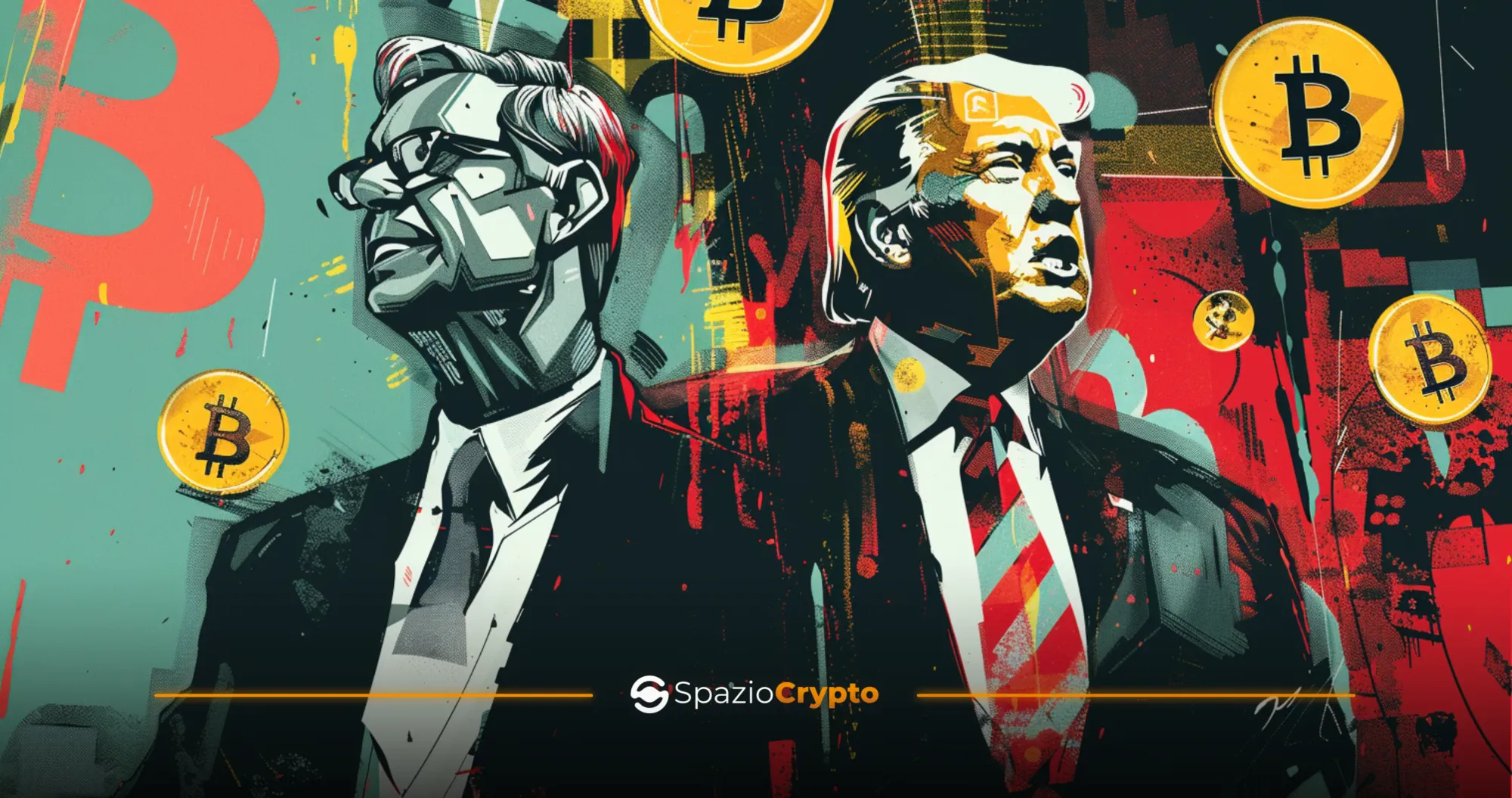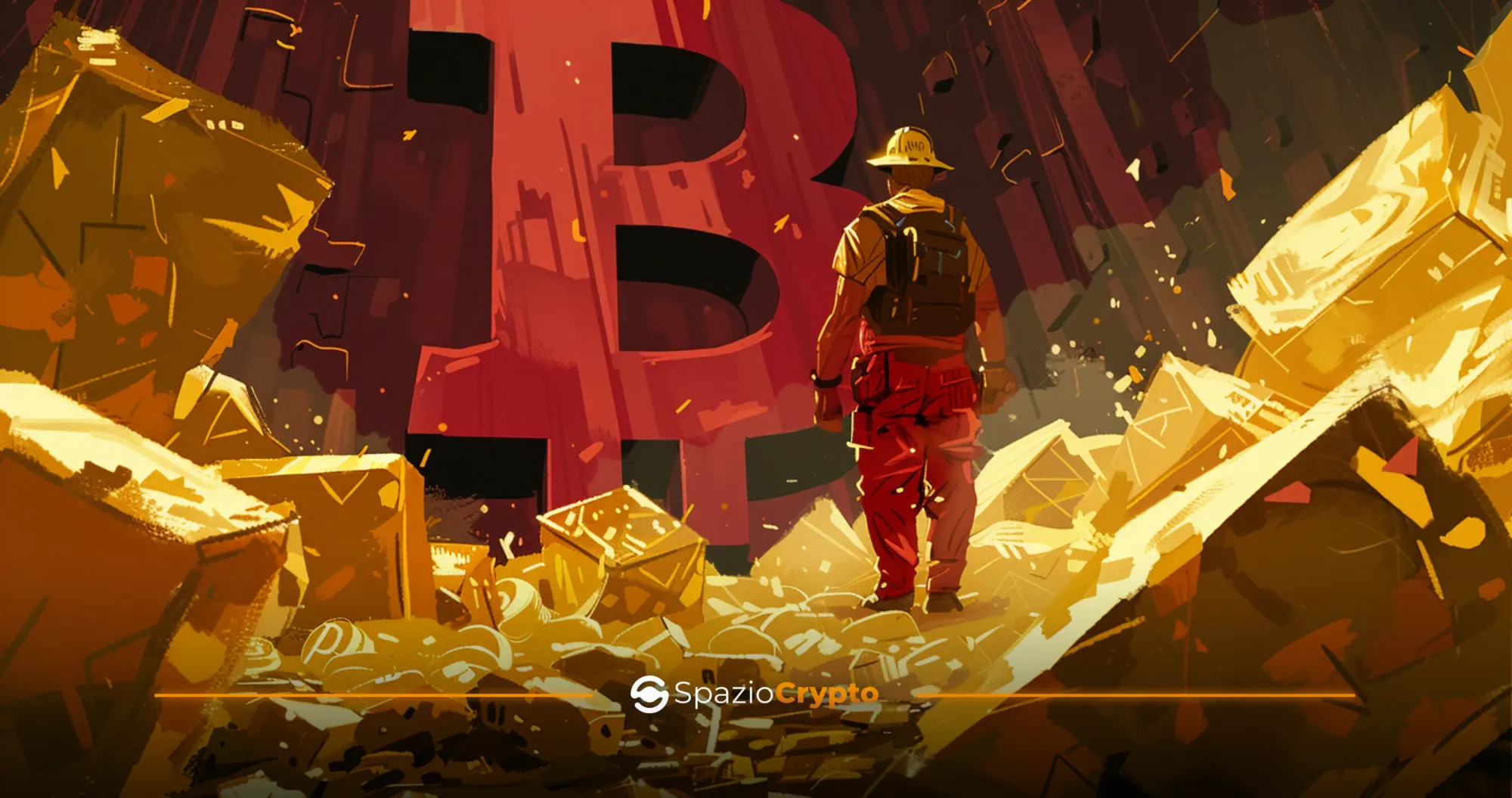In the world of cryptocurrencies, security and control over one's assets are crucial. Opening a crypto wallet is the crucial first step for anyone who wants to start investing or using cryptocurrencies safely. But how to open a crypto wallet? What are the different types of wallets and what considerations should you make when choosing the best one for your needs?
Crypto Wallet Types
In this educational guide from SpazioCrypto, we will explore everything you need to know about how to open and manage a crypto wallet. From comparing hardware and software wallets, to details on some of the most popular wallets such as Ledger Nano X, Trezor Model T, Metamask, Phantom and many more, we will provide you with the information you need to make informed decisions about the security and accessibility of your cryptocurrencies. You will also learn the essential steps to create your own wallet, along with tips on how to keep it safe in the long run. In the crypto world, the choice of wallet type is crucial to ensure security and control over your cryptocurrencies. Among the main types of wallets, there are hot, cold, and paper wallets, each with its own peculiarities and considerations. We will take an in-depth look at these three types of wallets to help you understand which one might be the best choice for your needs.
Hot Wallet
Hot wallets are characterised by their connection to the Internet and ease of use, making them ideal for everyday transactions. However, it is important to be aware of the pros and cons:
Convenience: hot wallets offer a high level of convenience. They are easily accessible from any Internet-connected device, making them ideal for frequent and immediate transactions.
Quick Access: Transactions with a hot wallet are fast and straightforward, perfect for those who need to move funds quickly.
Less Security: Hot wallets are vulnerable to cyber attacks, malware and phishing. Hackers can target these wallets to steal cryptocurrencies or compromise transaction security.
Not Suitable for Long Term: Due to their Internet-connected status, hot wallets are not ideal for long-term storage of large amounts of cryptocurrencies. For secure long-term storage, it is preferable to opt for a cold wallet.
Cold Wallet
Cold wallets are designed to maximise the security of your cryptocurrencies, as they are offline and therefore difficult to hack. Let's take a look at their pros and cons:
Maximum Security: The private keys of cold wallets are stored offline, drastically reducing the risk of hacking or theft.
Ideal for Cold Storage: They are perfect for long-term storage of large amounts of cryptocurrencies.
Protection against Online Attacks: They are immune to cyber attacks and malware, providing a very high level of security.
Less Convenience: Access to funds is less immediate than with hot wallets, making them less suitable for day-to-day transactions.
Risk of Loss: If you lose the physical device containing your cold wallet or its private keys, you may lose access to your funds permanently.
Paper Wallet: The Old School
Paper wallets represent a sub-category of cold wallets, and are increasingly less used than in the past. Private keys are physically printed or written on paper, and then removed forever from the network after transcription. This option offers excellent online security, but comes with physical risks that contribute to an increasing decrease in its use.
No Risk of Online Attacks: Because private keys are only on paper, they cannot be compromised by malware or online hackers. This offers significant peace of mind.
Full Control: With a paper wallet, you have full control over your private keys. No third party can access your funds unless you physically share the document.
Physical Risk: Because the paper wallet is a physical document, it is vulnerable to damage from water, fire or other catastrophes. Its storage requires care and precaution.
Irreversible Loss: If you lose your paper wallet or it is damaged beyond repair, you may lose access to your funds permanently. There is no recovery process as there is with online or hardware wallets.
Inconvenient for Transactions: Accessing funds from a paper wallet requires passing your private keys to a software or hardware wallet, which can be inconvenient if you need to make frequent transactions.
How to Open a Crypto Wallet and Guarantee Security
Your choice between hot and cold wallets will depend on your personal needs. Many experienced investors combine both types of wallets to achieve a balance between security and accessibility. Now that you have a clear understanding of the various types of crypto wallets, it's time to look at the essential steps to open a wallet and ensure its security. How to open a crypto wallet? Opening a wallet requires specific precautions to protect your private keys and digital assets.
Create a New Wallet
After choosing the wallet that best suits your needs, it is time to open a new wallet. How to open a crypto wallet? To do this, you can go to the website of the wallet you have chosen, making sure that the URL address is the official one, and follow the steps indicated to complete the wallet opening process.
Create a Secure Password: Your password is your wallet's first line of defence. Make sure you create a complex password containing upper and lower case letters, numbers and symbols. Avoid obvious and easily guessable passwords.
Backup of Private Keys: Before receiving your wallet address, it is essential to back up your private keys. These keys are essential for accessing your funds in case you lose your password or device. Save these keys in a secure location, such as an external hard drive or an encrypted USB drive.
Wallet Verification and Access
After creating your wallet, it is important to proceed with identity verification (if required) and wallet access:
Identity Verification: Some wallet services may require identity verification for legal compliance purposes. This step will involve sharing personal information and identity documents.
Wallet Access and Initial Setup: Once you have verified and gained access to your wallet, configure security settings, such as two-factor authentication (2FA) if available. This additional layer of security will make unauthorised access to your wallet more difficult.
Crypto Wallet Security and Maintenance
The security of your crypto wallet is an ongoing responsibility. Here are some basic practices to ensure its integrity over time:
Private Key Security: Keep your private keys safe and away from prying eyes. Consider using hardware wallets or wallet paper for an extra layer of security.
Regular Backups: Make regular backups of your private keys and login information. Keep backups in separate locations to avoid total loss in the event of an incident.
Wallet Software Updates: Keep your wallet software up-to-date to benefit from security fixes and new features.
Transaction Monitoring: Regularly monitor your wallet transactions for suspicious or unauthorised activity.
Wallet Recovery in the Event of Loss: Prepare a recovery plan in the event that you lose access to your wallet, such as storing your backup details in a secure location.
By following these steps and adopting the recommended security practices, you can open a crypto wallet securely and manage your digital assets with peace of mind.
Popular Crypto Wallets: Choosing and Using
You've learned about the concepts of hot, cold, and paper wallets, but now it's time to explore the real-world options available for you to choose from. There are many crypto wallets available, each with unique features and suitable for different purposes. Here is a detailed overview of the specific names of some popular wallets, both hot and cold:
Binance (Exchange wallet)
The Binance wallet is well known for its intuitive and functional user interface. Designed for desktop and mobile devices, it is an excellent choice for users of all levels, from beginners to experts. In addition to offering support for a wide range of cryptocurrencies, it offers an integrated trading service, which allows users to buy, sell and trade cryptocurrencies directly from the app.
PlasBit (Exchange wallet)
The PlasBit wallet is emerging due to its security and the ability to easily convert crypto to fiat. Through the wallet, debit cards, exchange, and other integrated services, this platform allows you to easily and securely convert and use cryptocurrencies in your daily life. Users' funds are stored offline in cold wallets, ensuring maximum protection.
Exodus (Desktop hot wallet)
This is a software wallet known for its attractive user interface. It is designed for desktops and is suitable for beginners and intermediate users. In addition to support for various cryptocurrencies, Exodus offers a built-in swap service, allowing users to convert cryptocurrencies without leaving the app.
Coinomi (Mobile hot wallet)
It is a mobile app that supports a wide range of cryptocurrencies. Its user-friendly interface is appreciated by mobile users. Coinomi offers strong security, including the ability to store private keys directly on the user's device and a recovery function in the event of device loss.
Electrum (Desktop and Mobile hot wallet)
It is a long-standing software wallet known for its security and privacy. It is available for both desktop and mobile devices. Electrum offers a high level of customisation and control, allowing users to manage their own private keys and transaction fees.
Metamask (Online hot wallet)
It is a browser extension that allows users to interact with Dapp, ERC-20 tokens, and many others. It is widely used by users of Ethereum, Polygon, and Binance. Metamask offers direct access to some of the major blockchains and easy management of private keys.
Phantom (Solana online hot wallet)
It is a wallet specifically for the Solana blockchain, available as a browser extension. It is designed to simplify interaction with the Solana blockchain. Phantom offers an intuitive user experience and supports all the features of the Solana blockchain, including participation in the consensus process.
Ledger Nano (Hardware cold wallet)
It is a hardware wallet known for its security and compatibility with numerous cryptocurrencies. It features an OLED screen for confirming transactions and requires physical user approval for each transaction.
Trezor (Hardware cold wallet)
It is a hardware wallet that offers an intuitive user experience and advanced functionality. The Model T has a touchscreen and offers advanced features such as password storage and multi-signature authorisation.
KeepKey (Hardware cold wallet)
It is another hardware wallet known for its OLED screen and support for Bitcoin, Ethereum and other cryptocurrencies. KeepKey offers a simple user interface and a high level of security thanks to the isolation of private keys.
Which wallet is best for you?
Choosing which wallet is best for you is not an easy choice. At SpazioCrypto we strive to provide users with the information and knowledge they need to embark on a safe and efficient journey through the Web3. We hope that in this guide you have been able to find all the information you need to make an informed choice. Often, many investors use a hardware wallet to store their cryptocurrencies in the long term, giving them more security and control than a hot wallet. But for everyday transactions, or trading, hot wallets such as Metamask are generally used. Another possible choice could be to decide not to open one's own wallet, and use the wallet integrated in some exchanges, such as that of Binance or PlasBit. As convenient as it may be to operate solely on an exchange, in the blockchain, the saying "Not your keys, not your crypto" exemplifies the individual responsibility of users to independently store their private keys and assets. Therefore, what we would recommend is to do your own research before making a decision. If you have the possibility, we recommend using a cold wallet for long-term storage, and a hot wallet for day-to-day transactions.








